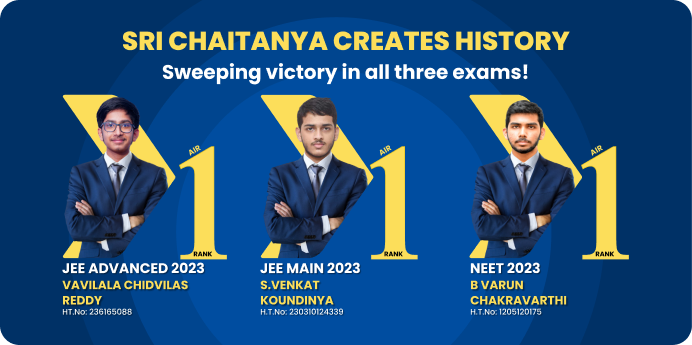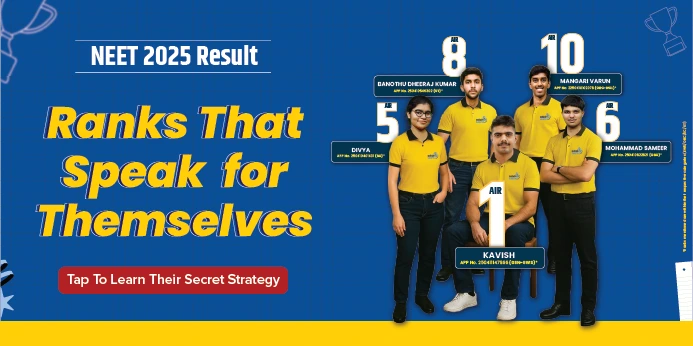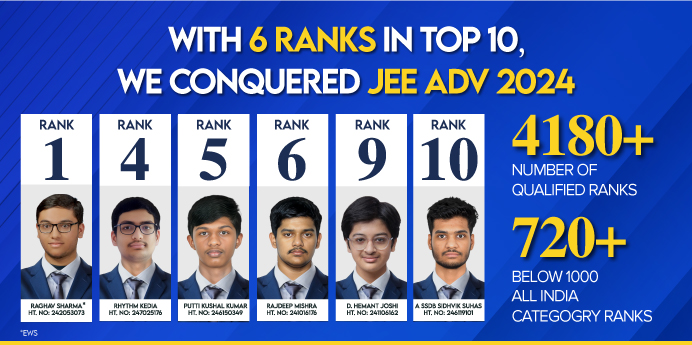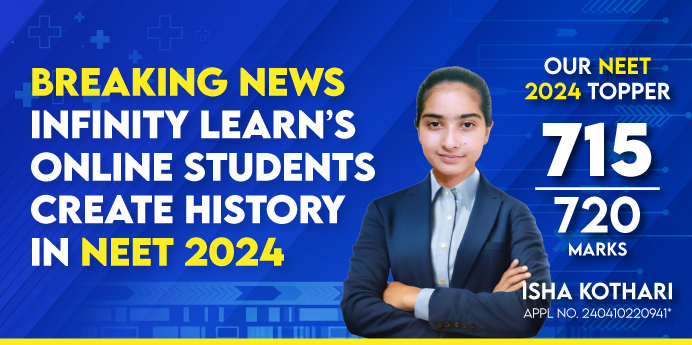










Courses

By Ankit Gupta
|
Updated on 5 Sep 2025, 11:00 IST
Mathematics is an important subject for Class 10 students, especially for those preparing for board exams and competitive tests like NTSE, Olympiads, and entrance exams. Understanding Maths concepts clearly is necessary for scoring good marks and building a strong foundation for future studies. To help students learn better, NCERT Solutions for Class 10 Maths provide detailed answers to all the questions in the NCERT textbook.
These solutions are created by subject experts who explain every step in a simple and clear way. Whether it’s Algebra, Geometry, Trigonometry, or Statistics, each chapter is covered with accurate and easy-to-understand answers. These Class 10 Maths NCERT Solutions follow the latest CBSE syllabus and help students prepare well for their exams. By practicing with these solutions, students can improve their problem-solving skills and gain confidence in Mathematics.
One of the best things about using NCERT Maths Solutions for Class 10 is that they help students learn how to write step-by-step answers, which is important for scoring full marks in the exam. Students can also use these solutions to revise before exams, do their homework, and clear their doubts on tricky topics.
These solutions are especially useful for students who find Maths difficult. With regular practice and clear explanations, tough problems become easier to solve. Whether you're preparing for the CBSE Class 10 board exam or just want to improve your Maths, these solutions are a great support tool.
Below are the chapter-wise NCERT Solutions for Class 10 Mathematics, designed to serve as a comprehensive guide for students. Reviewing these solutions will help you gain a clear understanding of key concepts and strengthen your preparation for board exams.
NCERT Solutions for Class 10 Maths Chapter 1: Real Numbers is a pivotal section that introduces students to the intricate world of numbers, specifically focusing on real numbers. Real numbers are a comprehensive set of numbers encompassing rational and irrational numbers, forming the bedrock of mathematical calculations and concepts.
The chapter initiates with a comprehensive overview of the properties of real numbers. These properties include closure, which states that the sum or product of two real numbers is also a real number; commutativity and associativity, governing the order of addition and multiplication; and distributivity, explaining how multiplication interacts with addition.
An essential component of the chapter is Euclid's division algorithm, a method to determine the highest common factor (HCF) of two integers. This algorithm aids in understanding the structure of integers and primes, facilitating factorization of numbers.

NCERT Solutions for Class 10 Maths Chapter 2: Polynomials delves into the fascinating realm of algebraic expressions and their manipulation. Polynomials, which are expressions comprised of terms involving variables and coefficients, play a crucial role in various mathematical and real-world contexts.
The chapter begins by introducing the concept of polynomials and their essential components like coefficients, variables, and exponents. It elaborates on monomials, binomials, trinomials, and general polynomials, showcasing their diversity. The operations of addition, subtraction, multiplication, and division of polynomials are thoroughly explained, providing a solid foundation for more advanced concepts. Factoring, a vital skill in mathematics, is explored extensively.

JEE

NEET

Foundation JEE

Foundation NEET

CBSE
The chapter illustrates various methods for factorization, including common factors, grouping, and the special cases of perfect square trinomials and differences of squares. Factoring not only simplifies polynomials but also aids in solving equations efficiently.
Pair of Linear Equations in Two Variables is the third chapter of NCERT Solutions for Class 10 Maths, offering a deep dive into solving a system of two linear equations involving two variables. This chapter holds immense significance as it not only enhances problem-solving skills but also finds applications in real-life scenarios across various domains.
The chapter commences by introducing the concept of linear equations in two variables and emphasizes their relevance in representing real-world situations. These situations often involve two unknown quantities that can be represented mathematically using equations. The methods of substitution and elimination are explained, enabling students to solve such pairs of linear equations.
Furthermore, the graphical representation of these equations is explored. By plotting the corresponding lines on a coordinate plane, students gain visual insight into solutions as intersection points of these lines. These graphical interpretations provide a tangible understanding of the solutions, particularly when dealing with graphical representations of real-world problems.

Certainly. The Quadratic Equations chapter in NCERT Solutions for Class 10 Maths delves into the intriguing realm of second-degree polynomial equations and their significance in various mathematical and real-world scenarios. The chapter initiates by introducing quadratic equations, which are polynomial equations of the form ax² + bx + c = 0, where 'x' represents the variable and 'a, 'b', and 'c' are constants.
These equations are explored for their solutions, referred to as roots, which can be found using methods like factoring, the quadratic formula, and completing the square. The chapter then meticulously guides students through these methods. Factoring involves breaking down the equation into factors and solving for 'x'. The quadratic formula, an invaluable tool, provides a direct approach to finding the roots using the formula: x = (-b ± √(b² - 4ac)) / 2a. Completing the square transforms the equation into a perfect square trinomial and simplifies the root determination process.
An integral aspect of the chapter is understanding the nature of roots based on the discriminant (b² - 4ac). If the discriminant is positive, the quadratic equation has two distinct real roots. A discriminant of zero yields two identical real roots, while a negative discriminant leads to complex roots.
Arithmetic Progressions is the fifth chapter of NCERT Solutions for Class 10 Maths, and it's all about understanding and working with sequences of numbers that follow a specific pattern. These patterns are called arithmetic progressions (AP). Imagine a line of numbers where each number is the sum of the previous one and a fixed number called the "common difference."
For example, starting with 2, if we keep adding 3 to each successive number, we get 2, 5, 8, 11, and so on. This is an arithmetic progression. In this chapter, you'll learn various aspects of APs. You'll discover how to find the terms of a sequence when you know the first term and the common difference. Conversely, if you know two terms, you can find the common difference.
There's a formula to find the 'n'th term of an AP, where 'n' represents the position of the term in the sequence. This formula is quite handy for quickly figuring out any term in a sequence without having to write down all the previous terms.
In this chapter, we're going to explore the wonderful world of triangles. A triangle is a basic shape with three sides and three angles. They're all around us, from the roof of a house to the shape of a slice of pizza. But triangles are not just shapes; they have a lot of interesting properties that we're going to uncover. We start by learning about different types of triangles based on their sides and angles.
Triangles can be classified as equilateral (where all sides and angles are equal), isosceles (with two sides and angles equal), and scalene (with no sides or angles equal). Knowing these types helps us understand their unique features. Moving on, we discover something called the Pythagorean Theorem.
This theorem is like a secret code that helps us find the length of one side of a right-angled triangle if we know the other two sides. It's super handy for solving real-world problems involving distances and measurements. Now, imagine we have two triangles that look different but have the same angles. These are called similar triangles.
They might be bigger or smaller, but their angles are the same. This idea becomes really useful when we want to find heights of tall buildings or distances that are hard to measure directly.
NCERT Solutions for Class 10 Maths Chapter 7: Coordinate Geometry is a fascinating exploration of how we can use numbers to describe the positions of points on a plane. Imagine a piece of graph paper where you have two lines, one going left and right (the x-axis) and another going up and down (the y-axis). This is called the coordinate plane.
In this chapter, you'll learn about how to use these axes to describe where a point is located. Each point on the plane has a pair of numbers associated with it, called its coordinates. The first number tells you how far to move left or right from a special point called the origin, and the second number tells you how far to move up or down.
You'll understand how to calculate the distance between two points on the plane using a simple formula that involves their coordinates. This is like measuring the length of a straight line between two places on a map. The chapter also explains how to find the midpoint of a line segment, which is like finding the point right in the middle. Think of it as the halfway point between two cities on a road trip.
NCERT Solutions for Class 10 Maths Chapter 8: Introduction to Trigonometry is a significant lesson that introduces us to a useful tool for understanding and solving problems involving triangles and angles. Trigonometry deals with the relationships between the sides and angles of triangles. Imagine you're looking at a right triangle, which is a triangle with one angle exactly 90 degrees.
Trigonometry helps us work with the other two angles in this triangle. We learn about three main ratios: sine, cosine, and tangent, which we abbreviate as sin, cos, and tan. Sine (sin) of an angle is the ratio of the length of the side opposite the angle to the length of the hypotenuse (the longest side of the triangle). The cosine (cos) of an angle is the ratio of the length of the side adjacent to the angle to the hypotenuse.
The tangent (tan) of an angle is the ratio of the length of the side opposite the angle to the side adjacent to the angle. These ratios might sound complex, but they are like secret codes that help us figure out missing side lengths or angles in a triangle. By using these ratios, we can solve real-world problems like finding the height of a tree, the distance across a river, or the angle of a ramp for a wheelchair.
Certainly! Chapter 9, Some Applications of Trigonometry, in NCERT Solutions for Class 10 Maths is all about using the concepts of trigonometry – which involves angles and the relationships between sides in triangles – to solve real-world problems. Trigonometry might sound complex, but it's like a toolkit that helps us measure and understand things around us.
The chapter starts by revisiting the basics of trigonometric ratios – sine, cosine, and tangent – which relate the angles in a right triangle to the lengths of its sides. These ratios are like tools we use to figure out how long or tall something is, even if we can't directly measure it. Then comes the exciting part – applications!
Imagine you're on a hill, and you need to know how tall a tree is at the bottom. By measuring the angle between your line of sight and the ground and knowing how far you are from the tree, trigonometry helps you find the tree's height using the tangent ratio. This is just one of the many practical examples the chapter covers.
NCERT Solutions for Class 10 Maths Chapter 10: Circles is a chapter that explores the intriguing world of circles and their properties. A circle is a simple shape that looks like the edge of a round cookie or a tire. Imagine drawing a line around a point, keeping the same distance from that point at all times – that's how a circle is made.
This chapter takes us on a journey through the characteristics of circles. It explains terms like radius, diameter, and circumference. The radius is the distance from the center of the circle to its edge, while the diameter is twice that distance. The circumference is the distance around the circle. We learn about chords, which are like lines drawn inside a circle that connect two points on the edge.
The chapter delves into the concept of arcs – parts of the circle's edge – and central angles, which are like slices of pizza from the circle's center. The chapter introduces the wonderful world of theorems related to circles. One important theorem is about angles formed when lines intersect the edge of the circle – these angles have a special relationship with the arcs they cover.
NCERT Solutions for Class 10 Maths Chapter 12: Areas Related to Circles is an important section that explores how to calculate the areas of different shapes that are related to circles. In our everyday life, circles and circular shapes are quite common, and understanding how to find their areas is practical and useful.
The chapter starts by introducing the concept of a sector of a circle, which is like a slice of pizza. We learn how to find the area of a sector by using the measure of its angle and the radius of the circle. This helps us figure out how much of the whole circle's area the sector covers. Next, the chapter delves into segments of a circle.
Think of a slice of orange – that's a segment. Depending on the size of the angle, we can find the area of the segment by subtracting the area of a triangle from the area of a sector. Composite shapes are also discussed. These are shapes made up of different parts, like a circle with a triangle sticking out. By calculating the areas of the individual parts and adding them up, we can find the area of the composite shape.
NCERT Solutions for Class 10 Maths Chapter 13: Surface Areas and Volumes delves into the exciting world of three-dimensional shapes and their measurements. Imagine a world beyond flat surfaces—this chapter helps us explore the space that objects occupy and how we can measure them.
The chapter focuses on figuring out how much space is covered by the outer layer of an object and how much "stuff" can fit inside it. To understand this, we learn about surface areas and volumes. The surface area is like the wrapping paper of a gift box—it's the total area of all the sides of a three-dimensional shape.
Think about a rectangular box—it has six faces, and we find out the area of each face and then add them up. Volume, on the other hand, is the "inside space" of a shape. It's how much water the shape can hold or how much space it occupies. Think of a water tank—it can hold a certain amount of water, and that's its volume.
NCERT Solutions for Class 10 Maths Chapter 14: Statistics is a chapter that delves into the world of data and numbers, helping us make sense of information in our everyday lives. Think of it as a tool that helps us organize and understand data more easily. Imagine you have a bunch of numbers that represent something, like the heights of students in a class or the scores of a sports team.
Statistics is about turning these numbers into useful information. This chapter starts by introducing you to the idea of data, which are just pieces of information that you collect. Then, it helps you learn how to arrange this data in an organized manner, like making a list or a table. Next, the chapter shows you how to find three important measures: mean, median, and mode.
These are like representatives of the data. The mean is the average of all the numbers, the median is the middle number when the numbers are in order, and the mode is the number that appears the most.
Probability is the final chapter in NCERT Solutions for Class 10 Maths, and it's all about understanding chances and likelihoods. Imagine you're flipping a coin or rolling a dice – you're curious about what might happen next, right? Probability helps you figure that out. Probability deals with the study of events and their possible outcomes.
An event could be anything from getting a head when you flip a coin to selecting a red ball from a bag of different-colored balls. This chapter guides you through the world of possibilities. You start by learning about simple events, like tossing a coin or picking a card from a deck. Then you move on to more complex situations, like finding the probability of two events happening together. For instance, what's the chance of getting both a 3-on-one roll of a dice and a head-on-one coin toss?
There are two types of probabilities: experimental and theoretical. Experimental probability comes from actually doing an experiment, like tossing a coin many times and seeing how often you get heads. Theoretical probability, on the other hand, is based on what we think should happen, like how many ways there are to get a head or a tail in a coin toss.
Using NCERT Solutions for Class 10 Maths provided by Infinity Learn can offer several benefits to students. Here are some key advantages:
In summary, Infinity Learn's NCERT Solutions for Class 10 Maths can provide students with valuable support in understanding, practicing, and mastering mathematical concepts. The well-structured solutions can enhance learning outcomes and contribute to academic success.
Mathematics can be a tough subject for many students, but with the right help, it can become one of the easiest. NCERT books are prescribed by CBSE and are known for their clear explanations. However, sometimes students face difficulties in solving the exercise questions on their own.
That’s where Class 10 Maths NCERT Solutions help. These solutions:
And the best part – these NCERT solutions for Class 10 Maths (2025–26) are available in FREE PDF format, so students can download and study anytime, anywhere.
Here are a few tips to get the most from these solutions:
No courses found
NCERT Solutions for Class 10 Maths are step-by-step answers to all the questions in the Class 10 NCERT Maths textbook. These solutions help students understand concepts better and prepare well for exams.
Yes, these solutions are very helpful for board exams. Most CBSE questions come directly from the NCERT textbook. Practicing these solutions helps in scoring high marks.
You can download free PDFs of chapter-wise NCERT Class 10 Maths Solutions from trusted educational websites like NCERT official site, Infinity Learn, or other learning platforms.
Yes, the NCERT Class 10 Maths Solutions are updated as per the latest CBSE syllabus for the academic year 2025–26.
Yes, the solutions are written in simple language with clear steps. Even students who find Maths difficult will find these solutions easy to follow.
Absolutely. These solutions explain word problems with examples and step-by-step methods, making it easier to understand and solve them correctly.
Yes. Practicing daily using NCERT Solutions helps build strong Maths concepts and improves your speed and accuracy for exams.